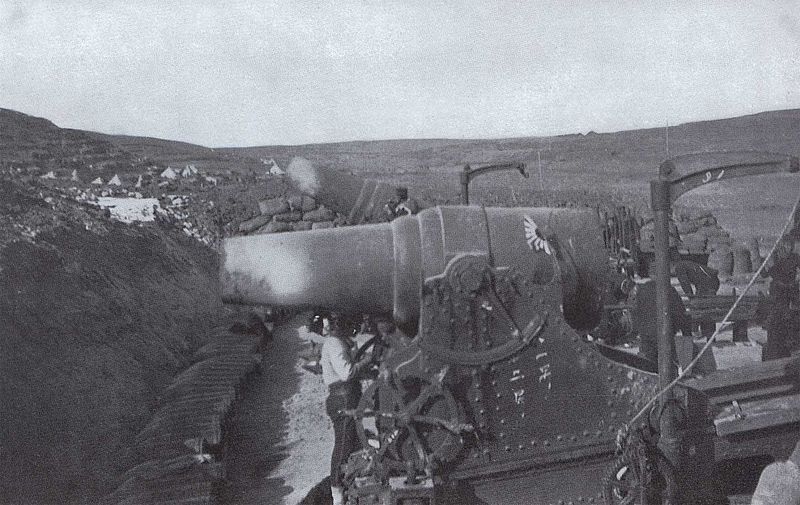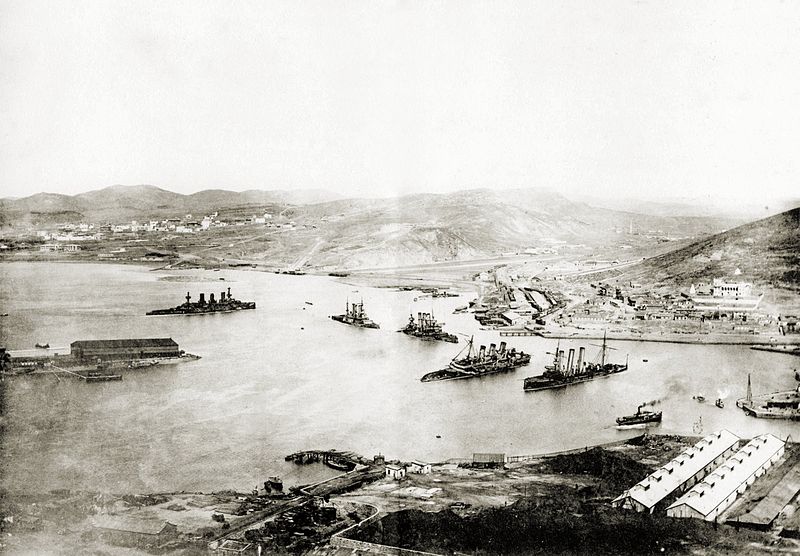The Russo-Japanese War
Part 2: The Conflict Negotiations between the two countries failed to resolve a growing conflict, and Japan opened hostilities with a surprise attack on Port Arthur, on February 8, 1904. This attack began three hours before the Japanese government issued a declaration of war. Japan succeeded in crippling three large Russian ships, including the heaviest battleships that Russia had in the east. Japanese forces continued to attack the Russian naval base at Port Arthur, while other Japanese troops were landing near Incheon in Korea. Those troops took Seoul and then Pyongyang and the rest of Korea and went further, into Manchuria. Meanwhile, Japan had set up a successful blockade of Port Arthur. Among the blockade tactics employed by Japan was the laying of mines. Two Russian ships, including the fleet’s flagship, slipped out of port under cover of darkness on April 12 but struck the Japanese mines, crippling both ships; the flagship sank straight away, and the other ship limped back into port. Japan needed to take the port and hunkered down for a siege in July. Japan had seized this port from China rather easily 20 years before. The Russian defenses were first rate, however, and Russian guns on heavily fortified hilltops rained down fire on Japanese ships for quite some time. Russia was able to bring to bear new technology, in a preview of World War I, employing machine guns, bolt-action rifles, and massive howitzers capable of hurling 500-pound shells five miles. This battle featured the kind of trench warfare, including barbed wire, that would be the signature element of the World War I as well.
Japanese troops eventually eliminated all hilltop defenses and turned those locations around, firing on Russian troops and the remainder of the Russian fleet. More than 30,000 Russian soldiers died or were wounded, and the rest surrendered in December. The attack was a surprise in more ways than one. Russia’s leader, Tsar Nicholas II, and his government were confident that a Russian presence in the east was enough to preserve the country’s strategic interests and that the reputation of a strong Russian military and the threat of a strong Russian military response would have a preventative effect on any Japanese aspirations of territorial conquest. None of that proved a deterrent to Japan. The crippling blow in the shipyards of Port Arthur was the first of several such disappointments for the Tsar. China’s Qing Empire, recently defeated by Japan in the First Sino-Japanese War, offered military support, which Japan refused. Chinese soldiers living in Manchuria fought for both sides, as mercenaries.
The first land battle of the war began on May 1, along the Yalu River, which was the site of a significant battle in the war between China and Japan two decades before. Japanese troops stormed across the river and attacked entrenched Russian positions with overwhelming force. Japan continued its advance inland. The Japanese inland target was Mukden. After the fall of Port Arthur, the two sides waited out the fierce Manchurian winter, camped not far from each other along a 60-mile line south of Mukden. Russia attempted to turn the tables by launching a surprise attack of its own, on January 25, 1905. Russian troops hit the Japanese line hard near the town of Sandepu and almost broke through; other than many casualties, however, not much changed. Japan launched an assault on February 20, 1905. Half a million men took part in the Battle of Mukden. Again, Japan won the day, forcing a Russian retreat. Russia lost 90,000 men. In October 1904, Russia had commenced a fleet redeployment, sending a large number of ships from the Baltic Sea to Vladivostok. Such a trip would take several months. It took longer because an incident that resulted in the Russian fleet’s being denied passage through the Suez Canal and having to go entirely around the southern tip of Africa. The reinforcement fleet arrived in the area in May 1905. By that time, both Port Arthur and Mukden had been lost and things looked grim for Russia. Wanting to get the reinforcements to their destination as quickly as possible, the Russian command ordered the ships to sail through Korea Strait, between Japan and Korea. The Japanese fleet was waiting, and the two sides met on the water in the Battle of Tsushima. Japanese ships decimated the Russian fleet, killing more than 5,000 men. Of the dozens of Russian ships, only three made it through to Vladivostok. Japanese forces then occupied Sakhalin Island (Russia’s largest), and Russia asked for peace. The result was the Treaty of Portsmouth, negotiated by U.S. President Theodore Roosevelt and signed by representatives of both Japan and Russia on September 5, 1905. The terms of the treaty, which was negotiated in Portsmouth, N.H., gave Japan the Liaodong Peninsula (including Port Arthur); the South Manchurian Railroad, which extended back into Manchuria from Port Arthur; and half of Sakhalin Island. Russia also agreed to recognize Japan’s control of Korea and to abandon Manchuria and give it back to China. Of significance, particularly to Japan, was the absence of any requirement by Russia to pay any sort of reparations to Japan. As well, Japan had occupied all of Sakhalin Island during the war but was pressured by the U.S. into giving back the northern half of it as part of the peace agreement. In global terms, Japan had proved its military mettle once again, winning in the space of 20 years significant victories over two traditional world powers. The industrialization of the Meiji Restoration had set Japan on a course that allowed for modernization and expansion. Russia, on the other hand, suffered a devastating loss of men, war materiel, and international prestige. The Russian economy went into a tailspin, and the Russian people revolted. The revolution began in early 1905 and carried on throughout the year. |
|



 Russia employed 50,000 troops to defend Port Arthur. Japan’s commitment was nearly twice that, including nearly 58,000 killed or wounded.
Russia employed 50,000 troops to defend Port Arthur. Japan’s commitment was nearly twice that, including nearly 58,000 killed or wounded. With the death of Russia’s highest admiral, who was aboard the flagship that sunk after hitting a mine in Port Arthur harbor, Russia named a new highest admiral and put him aboard a new flagship. While the Japanese were besieging Port Arthur, the new highest admiral managed to get a few ships out into the Yellow Sea to engage the Japanese ships there. Japan had more ships and heavier firepower, and the two sides traded bombardments for awhile before the Russian ships headed back into port.
With the death of Russia’s highest admiral, who was aboard the flagship that sunk after hitting a mine in Port Arthur harbor, Russia named a new highest admiral and put him aboard a new flagship. While the Japanese were besieging Port Arthur, the new highest admiral managed to get a few ships out into the Yellow Sea to engage the Japanese ships there. Japan had more ships and heavier firepower, and the two sides traded bombardments for awhile before the Russian ships headed back into port.
